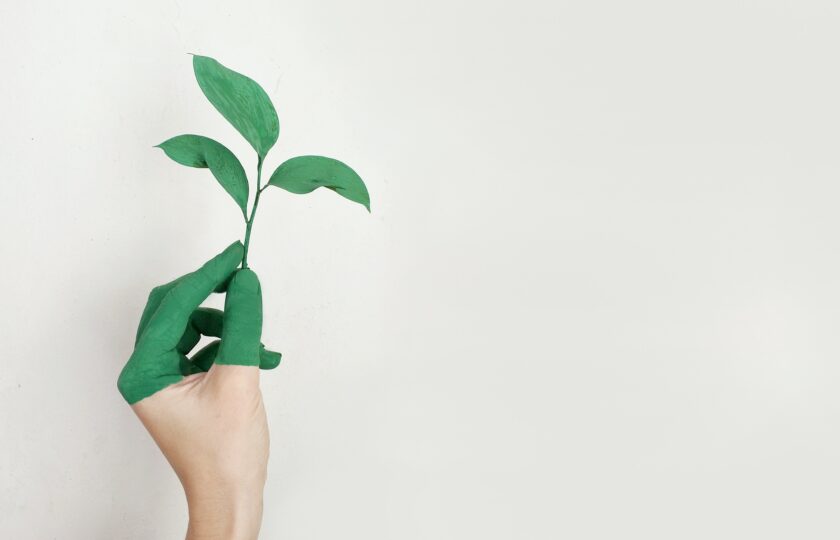The carbon footprint of large cooperative companies decreased more slowly in 2021 than the previous year or not at all. It was to be expected, because the reductions in fossil emissions were huge in 2020: in meat industry HKScan over 50 and Atria around 30 percent and consumer coops S Group 20 percent. You can’t do that every year.
Dairy coop Valio, Atria and forest coop Metsä Group were able to reduce their carbon footprint by 3-5 percent in 2021. HKScan stopped to catch its breath. The S group and mutual insurance company LähiTapiola took a step back when the need for winter heating increased.
Environmental work still did not subside. Companies have ambitious goals and dozens of projects to realize them.
Environmental responsibility is linked to cooperatives
31 percent of Finns associate environmental responsibility with cooperative companies, 11 percent with limited companies. The difference is almost threefold. This is according to a cooperative questionnaire by Pellervo done in spring 2022.
Let’s not think about what a listed company owned by cooperatives is in anyone’s opinion. If the company is perceived as a cooperative, it has a reputational advantage in environmental responsibility.
Corporate responsibility is no longer just a virtue
Corporate responsibility and sustainability is no longer a virtue for companies but a necessity. In annual reports, it is emphasized just like other company reputation and quality factors. Every CEO in each large cooperative company mentions sustainability and environmental responsibility in particular, in their annual report opening words.
HKScan CEO Tero Hemmilä explains: “Responsibility is the new normal in the operating environment, and its importance in managing profit and balance sheet will be emphasized. The ability to operate within the limits of the environment and ecological carrying capacity and to build a strong social foundation for the company enables the creation of good profit-making ability and responsible wealth.”
The director responsible for CSR is part of the management team at Atria, SOK and Valio.
Greenwashing or environmental responsibility?
According to an EU report, 42 percent of online sales’ environmental claims are greenwashing, i.e. exaggerated or inaccurate.
The companies’ environmental responsibility reports are also greenwashing in the sense that they try to influence public perceptions. However, by definition, sheer greenwashing is just what is untrue. After all, the reports mainly stick to the decisions made and audited calculations of the environmental effects.
The greatest importance of responsibility reports is in measuring results. We want to improve what is measured.
Climate neutrality as a goal
The Paris Climate Agreement 2015 set the goal that the world’s greenhouse emissions and carbon sinks will be in balance at the end of the century. The EU’s goal is balance in 2050. In Finland, the government has talked about 2035.
The goals of large cooperative companies are in line with Finland’s goals or more ambitious than them. One measure of responsibility is whether one does more than others.
S Group’s goal is carbon negativity by 2025. To achieve this, the group will build more solar and wind power and renew cooling equipment, so that they do not leak the most harmful greenhouse gases. OP Cooperative financial gorup and LähiTapiola are aiming for climate neutrality by 2025. In addition to its own operations, LähiTapiola plans to zero out the climate impact of its investment portfolio by 2050.
Metsä Group’s goal is 2030.
The whole food chain put to work
Valio and Atria’s goal is to zero the carbon footprint of their entire food chain by 2035. HKScan’s target year is 2040. “The goal is ambitious, but possible to achieve with cooperation”, Valio’s responsibility report assesses.
Achieving zero-carbon is already a goal this decade for the food industry. Primary production is the biggest challenge, especially the methane belches from cattle. They are reduced with feeding solutions and compensated with carbon farming and biogas produced from manure. To produce the latter, Valio and St1 have founded Suomen Lantakaasu Oy (“Finnish Manure Gas Ltd.”).
Valio evaluates in its materiality matrix of sustainable business value creation, which issues have the greatest influence on the valuations and decisions of stakeholders. The three most important are a carbon-neutral milk chain, the origin of raw materials, and responsible and healthy products.
“It can be said with certainty”
Climate change is not the only environmental issue. The responsibility reports also deal with water, biodiversity, plastic, waste and recycling, renewable energy and animal welfare. The topicality of climate change was raised by the reports of the World Climate Panel. According to the consensus of scientists, “it can be said with certainty that human activities have warmed the atmosphere, seas and soil”.
When following the media, the consensus among scientists is less obvious. The media also wants to bring out the opposite point of view, even if its presenters are one against a thousand. On the Internet, everyone can always find a soul mate, no matter what their opinion is.
Probable disadvantages in Finland are at least increased rains at the wrong time and new pests and weeds. The growing season is getting longer, but the hot periods of summer test plants as well as people.
Insurance companies LähiTapiola and Pohjola say that according to their statistics, damage caused by nature seems to be increasing. However, the variation between years is large.
Lots of text and numbers
The methods of calculating environmental metrics are developing, changing from the reader’s point of view. For instance, OP Cooperative changed the method of calculating the carbon balance but did not calculate the comparison figure of the previous year using new criteria. Minus for that. On the other hand, Atria’s carbon footprint reduction in 2020 doubled in the checkup calculation.
Large companies deal with environmental responsibility on dozens of pages. Some have a uniform way of telling the most important figures, others have them in text, tables or in approximate figures. There is not always an exact comparison with the previous year.
Heikki Vuorela
The author is a journalist and a member of Cooperative Magazine’s Yearbook analyst team.

